Carlos Alcaraz, the young Spanish tennis sensation, has taken the tennis world by storm with his explosive game and unwavering determination. While he has proven his mettle on all court surfaces, many consider clay to be his best. This article delves into the secrets behind Alcaraz’s success on clay, exploring his training base, routines, and the key adaptations players need to make to excel on this challenging surface.
The Foundation: Alcaraz’s Clay Court Training Base
Alcaraz honed his skills at the JC Ferrero Equelite Sport Academy in Villena, Spain. This academy, run by his coach and former world No. 1 Juan Carlos Ferrero, boasts world-class facilities, including:
- 10 clay courts, one of which is a PlaySight smart court
- 7 hard courts, one of which is a PlaySight smart court
- 1 indoor hard court
- 1 central hard court
- 1 grass court
The academy’s location in the Valencia region provides a mild to hot climate with little rain, ideal for year-round training. The academy also offers a gym, running track, soccer field, padel courts, swimming pools, and a physiotherapy clinic.
Ferrero’s influence on Alcaraz’s development is undeniable. He recognized Alcaraz’s unique potential early on and dedicated himself to coaching him, even turning down offers from other top players. Alcaraz considers Ferrero a “second father,” highlighting the deep bond and trust between them.
However, Alcaraz will start his Monte-Carlo Masters 2025 campaign without Ferrero, with Samuel Lopez as his main coach.
Adapting to Clay: Key Strategies and Techniques
Clay court tennis demands a unique set of skills and strategies. Here’s how players can adapt their game to thrive on this surface:
1. Mastering Movement
- Sliding: Sliding is a fundamental skill on clay, allowing players to reach wide shots and maintain balance. It involves sliding into the shot, rather than hitting and then sliding. Strength in the core, hips, and adductors is essential for good body control during sliding.
- Low Center of Gravity: Maintaining a low stance and wide base provides stability and balance on the slippery surface.
- Agility Drills: Practicing agility drills on clay builds confidence in movement and helps players react quickly to changes in direction.
- Footwork Patterns: Incorporating footwork drills like overcross, sidestep, and split step improves recovery and court coverage.
2. Adjusting Stroke Production
- Topspin: Clay courts reward topspin, as the grit allows for more bite on the ball, resulting in higher bounces and slower ball speed. Players should focus on “ripping over the ball” to generate more topspin.
- Height Over the Net: Hitting with more height over the net increases consistency and allows for deeper shots.
- Angles: Clay courts offer opportunities to exploit angles and move opponents around the court. Players should practice hitting angles from both forehand and backhand sides, even on the run.
3. Mental Fortitude
- Patience: Clay court rallies are typically longer, requiring players to be patient and construct points carefully. It’s important to avoid the trap of trying to end points too early.
- Mental Toughness: Adaptability requires mental resilience and the ability to stay calm and focused under pressure. Players should practice mental exercises to maintain focus and composure.
- Adaptability: Being able to adjust game plans based on the opponent, playing conditions, and match situation is crucial for success on clay.
4. Physical Conditioning
- Endurance: Longer rallies on clay demand good power endurance and stamina. Players should focus on building aerobic capacity and muscle endurance to last through matches.
- Leg Strength: Strong legs are essential for movement, balance, and generating power on clay. Exercises like dumbbell side lunges are effective for strengthening the adductors and hips.
- Shoulder Stability: Hitting high-bouncing balls requires good shoulder stability to maintain power and prevent injuries. Exercises like band high flyes can help prepare the shoulder girdle.
5. Tactical Awareness
- Patterns of Play: Using set patterns of play to move opponents around the court can be more effective than trying to overpower them.
- Exploiting the Backhand: Targeting the opponent’s backhand can create opportunities to dictate play and open up the court.
- Net Play: While net play can be challenging on clay, using high, loopy topspin balls to approach the net can surprise opponents and disrupt their rhythm.
- Consistency and Angles: Focus on maintaining consistency and using angles to create opportunities and force errors.
Alcaraz’s Training Routine: A Glimpse
While the specifics of Alcaraz’s training routine are closely guarded, some insights can be gleaned from various sources:
- Warm-up: Alcaraz’s warm-up routine includes stretching, mobility exercises, and muscle activation to prepare his body for intense training and prevent injuries. Examples include spinal flexion and extension, spinal circles, and prone swimmers.
- Tennis-Specific Drills: Alcaraz hones his skills on clay by practicing sliding techniques and movement patterns with precision.
- Power Generation: Alcaraz’s training incorporates tools like medicine balls, resistance bands, and weighted vests to build explosive power for his shots.
- Core Strength: Core exercises like planks, Russian twists, and medicine ball slams are crucial for transferring power from the lower body to the upper body.
- Lower Body Strength: Squats, lunges, and plyometric jumps improve speed, explosiveness, and stability on the court.
Common Pitfalls to Avoid
- Using Hard Court Shoes: Hard court shoes don’t provide adequate grip on clay, making sliding and changing direction difficult. Clay court shoes with special soles are essential.
- Hitting Flat Shots: Flat shots are less effective on clay due to the higher bounce and slower ball speed. Players should focus on generating topspin.
- Lacking Patience: Trying to end points too quickly can lead to errors on clay. Players should be prepared for longer rallies and construct points carefully.
- Neglecting Footwork: Poor footwork can be exposed on clay. Players should prioritize agility drills and movement patterns to improve court coverage.
- Ignoring Mental Toughness: Getting frustrated by longer rallies and inconsistent bounces can negatively impact performance. Players should develop mental resilience and stay focused.
Conclusion
Carlos Alcaraz’s success on clay is a result of his natural talent, dedicated training, and adaptability. By understanding the nuances of clay court tennis and implementing the right strategies and techniques, players of all levels can improve their performance and enjoy the challenges of this unique surface. As Alcaraz continues his quest for dominance on clay, his journey serves as an inspiration for aspiring tennis players worldwide.


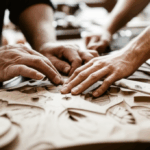
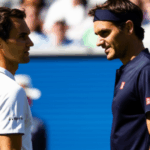
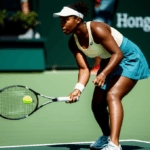
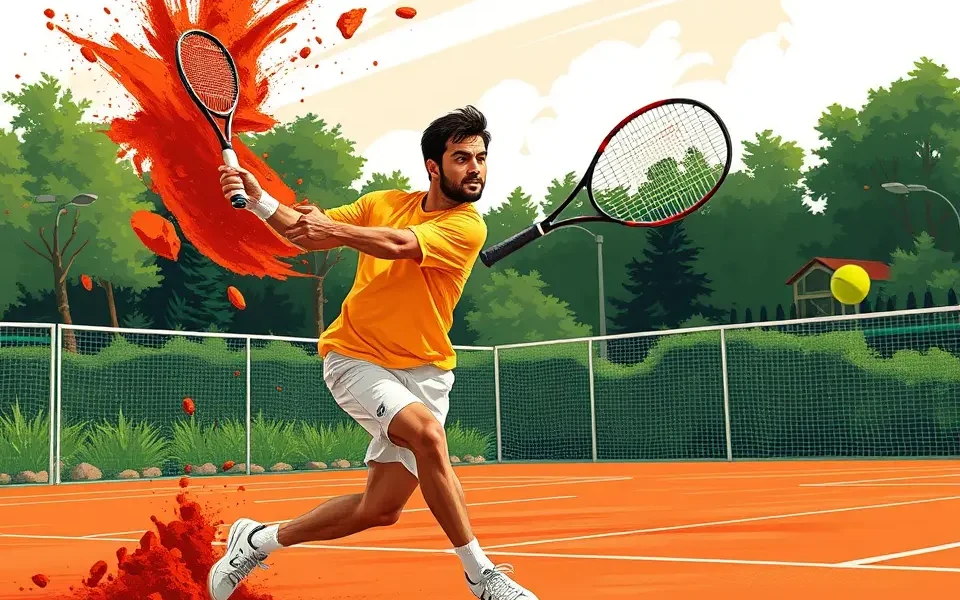
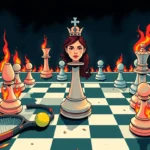

No Comment! Be the first one.